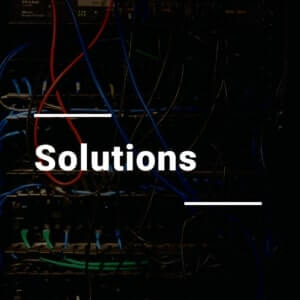 Teleradiology is ripe for blockchain. Healthcare image diagnosis and treatment is based on trust; It could be based on truth. Let’s explore how.
Teleradiology is ripe for blockchain. Healthcare image diagnosis and treatment is based on trust; It could be based on truth. Let’s explore how.
Teleradiology, or remote radiology service, is the future of radiology. Information technology has been the genesis of radiology and nuclear medicine. Night-hawk services have changed the future of work for radiology. All but vascular and interventional radiology is protected from outsourcing. As radiology outsourcing moves to low-wage countries, revisiting the fee-per-report reimbursement scheme is in order. How can the in-house radiologist compete?
Blockchain technology can assist with improving the truth for CT scans, MRIs and conventional radiographs. Blockchain technology gives radiologists and their patients truth.
Why are use cases so scarce?
Are you trying to apply blockchain to healthcare? Having trouble finding concrete use cases? There’s a simple reason for that.
Are you protecting trade secrets or using innovation as a strategic advantage? Nondisclosure agreements (NDA) are the reason why you’re unable to find specific use cases for a named company.
Have you ever had a great idea, only to realize that someone else created the product, service or designed the interaction first? I think we all have experienced this at one time or another. A realization that is almost comical happens the more you’re engaged in a field. You’re unable to talk about the best ideas. Verbal agreements lead to confidentiality agreements which eventually result in nondisclosure agreements.
At some point, you grow your understanding of a topic from information to knowledge to strategy. It’s at the strategy level where it gets dangerous. Why? This is the time where you have the knowledge and the ability to execute. Few leaders will reach out to an expert they don’t think can deliver or whose ideas can’t be realized. Frequently, leaders, championing innovation efforts are frustrated with the lack of specific or contextual examples with innovation. Recently this frustration has focused on the difficulty of identifying use cases that apply to blockchain in healthcare. It’s not all grim; there is an upside. Here are two examples.
- A builder is building a new custom house; however, they are not able to talk about the design. If you were considering the development of a custom garage for your boat or plane, the good news is the builder’s knowledge will transfer.
- A doctor designed a patient care program for a particular patient, and they are unable to discuss the name or specific situation of the patient. However, that doctor’s knowledge and the themes applied will be useful if you’re designing a new patient experience.
Almost all knowledge is transferable. Don’t get hung up on the specifics — partner with a leader who can be trusted and has a track record. If they are engaged at the edge creating strategies for sustainable competitive advantage, board members will be quick to ensure their IP is protected. The organization won’t want those competitive ideas discussed outside a small circle of individuals. That same professional courtesy will be extended when exploring new models for profitability, with your organization.
Teleradiology for clinical applications
Radiology is the science of high-energy radiation for the diagnosis and treatment of disease. Teleradiology extends this definition into the transmission of radiological patient images — X-rays, CT scans and MRIs, for example.
Diagnostic imaging modalities, the way a disease or illness is diagnosed by a doctor, vary based on clinical need. I’ll briefly explain the seven of the major types of modalities used today.
- Projection (plain) radiography (X-ray): produced by transmitting X-rays through a patient. Film has been replaced by computed radiography (CR) and more recently by digital radiography (DR). Plain radiographs can be used to identify various types of arthritis and pneumonia, bone tumors (especially benign bone tumors), fractures and congenital skeletal anomalies.
- Fluoroscopy and angiography: generated with a fluorescent screen, an image intensifier tube is connected to a closed-circuit television system. This type of special X-ray image is used to help identify abnormalities such as tumors, cysts and inflammations.
- Computed tomography (CT scan): CT scans use X-rays combined with computing algorithms to create an image of the body. Often used for urgent or emergent conditions including cerebral hemorrhage, pulmonary embolism (clots in the arteries of the lungs), aortic dissection (tearing of the aortic wall) and obstructing kidney stones.
- Ultrasound (echo): used to visualize soft tissue structures in the body. Medical ultrasonography uses ultrasound in real time. This imaging technology is useful when observing changes over time. For example, heart valves and major vessels or monitoring changes in carotid arteries that may be a warning sign of an impending stroke.
- Magnetic resonance imaging (MRI): use powerful magnetic fields to align atomic nuclei with body tissues. Among all the imaging modalities, MRI scans give the best soft tissue contrast. MRIs help doctors to determine if tissues are healthy. They can be used to identify brain tumors, traumatic brain injury, developmental anomalies, multiple sclerosis, stroke, dementia, infection and the causes of headaches.
- Nuclear medicine: uses radiopharmaceuticals administered into a patient. Positron emission tomography (PET) scans or single-photon emission computed tomography (SPECT) can be used to improve diagnostic accuracy. Nuclear medicine imaging is used to evaluate specific conditions relating to the heart, lungs, thyroid, liver, brain, gallbladder and bones.
- Interventional radiology (IR or VIR): vascular and interventional radiology are minimally invasive to the patient. Whether for diagnosis (angiography, looking at blood vessels and organs) or treatment (angioplasty, to widen obstructed arteries or veins) IR is used to identify the disease. Several uses for IR exist, including the diagnosis or treatment of vascular disease, renal artery stenosis and gastrostomy tube placements.
Teleradiology’s business case
Teleradiology is the transmission of radiographic images from one location to another for sharing studies with other radiologists and physicians. The benefits of teleradiology mirror the benefits of telehealth. A doctor who needs the results of a scan can transmit that image to the West Coast or overseas to ensure a timely reading.
The primary benefit of blockchain technologies, when applied to teleradiology, is “truth,” not “trust” by offering an integrity check on patient images. Yesterday, radiologists had to trust that images were accurate and unaltered — but they had no proof. Today, they have truth — immutable evidence that the images they are reading are unchanged.
Does this add value? You tell me. Let’s assume you’re a patient. When your doctor made a diagnosis on your image, would it matter to know with near 100 percent certainty that the image was unaltered? It would matter to me. Let’s assume you can choose two providers to read your image. The first provider ensures that the image is unaltered. The second provider claims to have high security but offers no guarantees that the image is unaltered. Which provider would you choose?
Truth over the trust is the business care for teleradiology — patient image proof for treatment and diagnosis.
As a recent study found, 1 out of 20 (or 12 million) U.S. adults annually are misdiagnosed. Most patients won’t gamble on their health when the circumstances are severe enough to warrant a scan.
Immutable patient images
We can expand the business case of teleradiology to include image transmission. By using blockchain technology, improved patient image immutability ensures that a provider can validate that the image and diagnosis are unchanged. Providers can verify that they are reviewing the latest copy and confirm the “right” image version was received.
This proof can be incorporated into the image display view for clinicians. For example, an image would have three statuses for “image validation:”
- Confirmed: A green check mark would appear if the image was validated and unaltered.
- Untrusted: A red “X” indicates the image had been manipulated.
- Unknown: A gray question mark could be used if there was a connectivity problem.
If a clinician was so inclined, he or she could select “image validation” and view the patient image detail, which would include the following:
- Visual confirmation: the “image validation” discussed previously.
- Transaction ID: blockchain address.
- Hash: hash value.
- Received: the date and time presented to the user.
- Confirmation: date and time the transaction was committed.
- Visual chart: illustration of associated linked images.
- Local stored: date and time with an internal reference number.
Together, these attributes present proof the image was unchanged. Using these principles, blockchain technology can create proof of the receipt and transmission of Digital Imaging and Communications in Medicine (DICOM) data. DICOM is a standard for handling, storing, printing, and transmitting information in medical imaging.
A few myths debunked
Are patient records stored on the blockchain? No, the blockchain provides a check of the patient image (a hash similar to a checksum function) to ensure the record hasn’t been tampered with. The patient image and data do not live in the blockchain.
Is the blockchain able to handle these large record sizes? A common misconception is that these patient images will be transferred to a blockchain. This isn’t how it works. The patient image would be transferred to your existing image repository. Only the check or hash would reside on the blockchain, not the image.
Do blockchain projects in healthcare require significant changes to core technology? No. The imaging workflow is not changed. To implement, simply add a new workflow that records the data source in a digital ledger. A basic check can then be used to verify that the data source is unchanged.
Doesn’t blockchain data need to be encrypted? Nope. Remember the patient image is not stored on a blockchain, only the hash. Unless you hold the private and public key, you’re unable to make use of the data. You would use the same standard security protocols for transferring data. There is a proposal from the MIT Media Lab to address the protection of personal data.
Is additional infrastructure required to bolt on blockchain for encryption? The short answer is no. Often, healthcare leaders who start to research blockchain mistakenly feel data needs to be encrypted. The data that is being transmitted to the blockchain isn’t subject to HIPAA regulations; it’s not protected health information. Remember, the image isn’t being transmitted to the blockchain, only the hash.
MIT does have an active project exploring a peer-to-peer network that allows users to share their data with cryptographic privacy guarantees. This would be useful when the patient learns their relative position in the group but learns nothing about other members “diagnoses.” This community-based approach for data analytics could be leveraged to allow patients to conditionally share image diagnoses for the benefit of the crowd.
The Radiological Society of North America (RSNA), the American College of Radiology and the International Society for Magnetic Resonance in Medicine (ISMRM) have lots of additional information on radiology. For a complete list of domestic and international radiological associations, Radiology.org is a great resource.
The path to implementation
Are you thinking about applying blockchain technology for teleradiology? There are many ways to exploit the benefits of blockchain technologies. Blockchain’s characteristics of distributed, public, time-stamped and persistent establish proof, giving providers immutable proof that sensitive data has not been altered. When it comes to your health, would you rather have trust or indisputable truth that your patient images haven’t been changed?

















